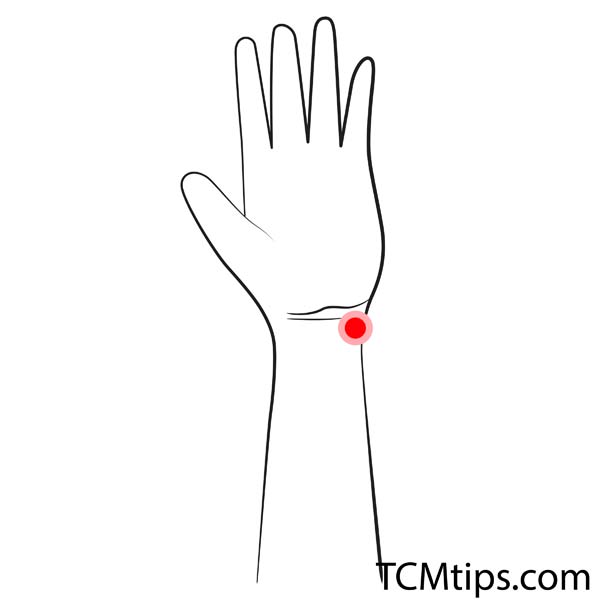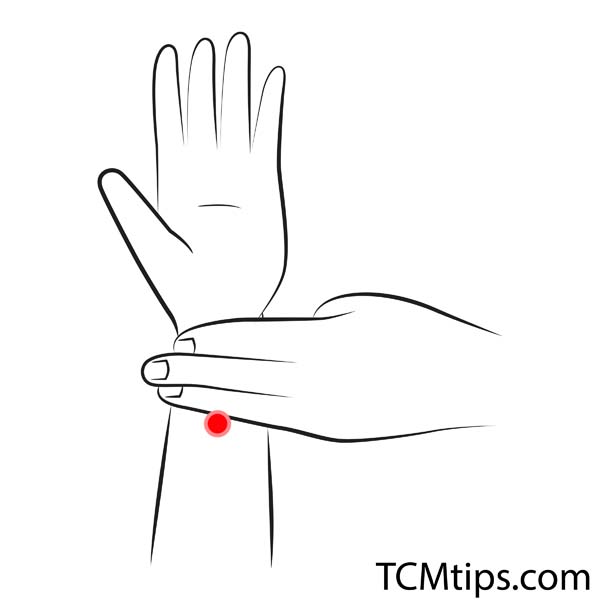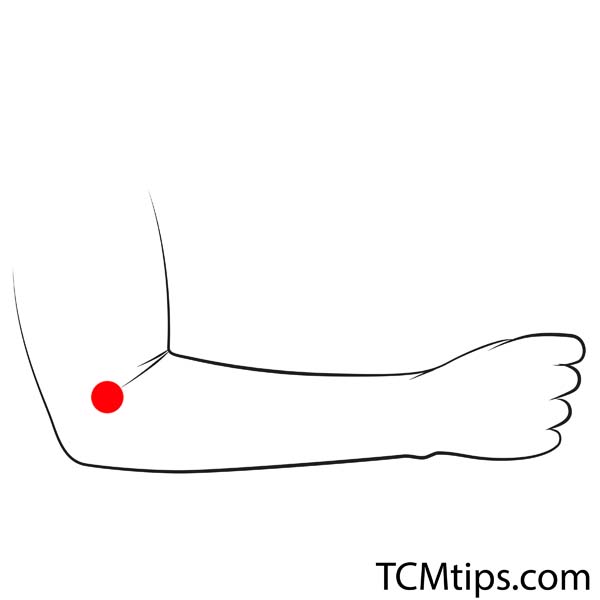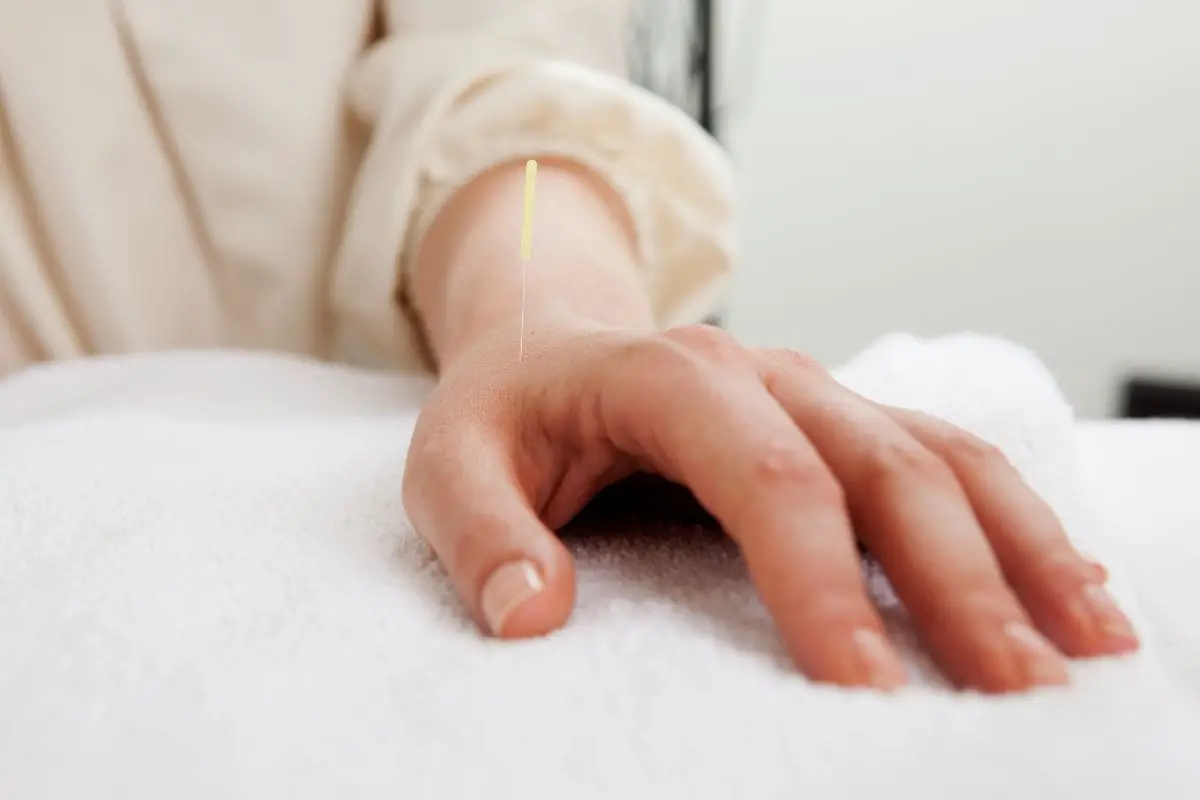Acupuncture and the stimulation of acupuncture points have long been used to treat various ailments. In recent years, studies have shown that acupuncture can also effectively treat PTSD (Post-Traumatic Stress Disorder).
Acupuncturists often recommend certain acupuncture points for PTSD treatment.
To learn about how acupuncture can aid in healing people with PTSD, take a look at the guide below. We cover everything you need to know, including a detailed description of the 5 acupuncture points for PTSD treatment.
What Is PTSD?
According to the diagnostic and statistical manual of mental disorders, PTSD (post-traumatic stress disorder) is a mental health disorder that generally takes hold after experiencing a traumatic event.
Symptoms include flashbacks of the traumatic event, nightmares, anxiety symptoms, chronic pain, physical pain, depression, anger, irritability, sexual dysfunction, and hypervigilance.
If left untreated, clinical trials show that PTSD can cause serious problems such as substance abuse, and suicide attempts.
Many military veterans have PTSD as a result of their experience within war zones. However, PTSD isn’t limited to military veterans or combat veterans.
In fact, people of all ages, genders, and occupations receive help (such as exposure therapy, behavioral therapy, or alternative treatments) for PTSD.
There are many treatments for PTSD, including drug therapy and psychotherapy. Generally speaking, when treating PTSD, qualified therapists will use a listening type of psychotherapy to help the patient.
However, depending on the type and severity of the trauma experienced by the patient, listening-type therapy may be inefficient. As such, many people suffering with posttraumatic stress disorder search for complementary and alternative medicine to help alleviate their symptoms.
Does Acupuncture Help With PTSD?

You’re likely wondering what the effectiveness of acupuncture as PTSD treatment is. According to clinical trials, acupuncture is capable of relieving symptoms of Post-Traumatic Stress Disorder.
This is because acupuncture is understood to affect the autonomic nervous system, the prefrontal, and the limbic brain structures.
As such, trials of acupuncture have shown that it can be a good option for individuals with PTSD who have felt as though listening-style psychotherapy doesn’t work well for them.
In fact, because you don’t have to recall painful memories of a traumatic event during acupuncture treatment, acupuncture is a very safe treatment option.
5 Acupuncture Points For PTSD
There are a number of specific acupuncture points for healing Post-Traumatic Stress Disorder. Experienced acupuncture practitioners will primarily focus on these acupoints to alleviate the symptoms associated with PTSD.
Below, we’ve listed 5 acupuncture points for PTSD. Check them out to learn more!
Acupoint: LI-4 (Other Names: Large Intestine-4/He Gu/Joining Valley)

HéGū L.I. 4, or Hegu, is the fourth acupuncture point on the large intestine meridian in TCM. It is located on the hand, in between the thumb and index finger. It is known to be a useful acupoint for stopping pain. It also works to strengthen the patient’s immunity and regulate the face and head areas.
In fact, LI-4 is a great pressure point when attempting to treat headaches and tired eyes when combined with a number of other acupoints. To learn more about these uses, take a look at this article on the heavenly pillar acupressure point.
Acupoint: ST-36 (Other Names: Stomach-36/Zu San Li/Leg Three Miles)

ST-36, or Zusanli, is an acupoint that is located below the knee. It is on the tibialis anterior muscle which is situated along the stomach meridian. If you’re interested in acupuncture points for trauma, Zusanli will be of great interest.
It is understood to induce local serotonin release. It also works to improve alcohol withdrawal syndrome and nicotine sensation.
ST-36 has many other uses too. Specifically, it is known to be effective at relieving lower abdominal pain. To learn more, take a look at the article ‘Acupressure Points for Lower Abdominal Pain’.
Acupoint: HT-7 (Other Names: Heart-7/Shen Men/Spirit Gate)

Ht-7, or Shenmen, is one of the main points on the Heart meridian. It is located on the wrist crease and is quite easy to access. Shenmen translates to ‘spirit gate’, meaning the door to the mind and emotion.
As such, this is one of the best acupressure points for PTSD. It is thought to help with psychological stress, insomnia, and alcohol or nicotine withdrawal.
The HT-7 acupoint is considered to be an excellent asset when it comes to relaxing emotions and tension throughout the body. To learn more, check out this article on heart meridian points.
Acupoint: PC-6 (Other Names: Pericardium-6/Nei Guan/Inner Pass)

Nei Guan, or PC-6, is an acupoint located on the anterior forearm. It is roughly two cun (Chinese measurement used in Chinese medicine) above the wrist crease, in between the tendons of the flexor carpi radialis and the palmaris longus muscles.
It is situated along the pericardium meridian. This point is used to alleviate nausea and symptoms of anxiety.

The PC-6 point is also known to be useful when attempting to relieve shoulder and arm nerve pain. To learn about this useful benefit more, take a look at this article on acupressure points for shoulder and arm nerve pain.
Acupoint: LI-11 (Other Names: Large Intestine-11/Qu Chi/Pool at the Crook)

Quchi, or LI-11, is an acupuncture point located on the outside end of the crease on the elbow. It is situated on the large intestine meridian.
It is understood to clear heat, meaning that this acupoint can aid in alleviating symptoms of anxiety, hyperactivity, insomnia, high blood pressure, and a fiery temper.
This acupressure point has a wide range of other benefits. It is thought to relieve elbow pain, numbness in the hand, stiff shoulders, fevers, and a sore throat. To find out more, check out this article on pressure points on the forearm.

Try our Anti-Aging Gua Sha Tool designed to bring out your skin’s natural glow.
Best Gua Sha Product- Anti-Aging: The tool is designed to target 11 specific aging signs such as wrinkles and sagging skin. By following the 7-step routine, users can improve skin firmness and reduce fine lines naturally.
- Enhances Skincare Routine: It works effectively with serums and lotions, boosting absorption and efficacy of skincare products.
- Visible Skin Improvement: Users can expect a smoother complexion, reduced puffiness, and a more youthful appearance.
 P. Sze
P. Sze 

















